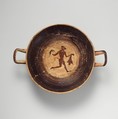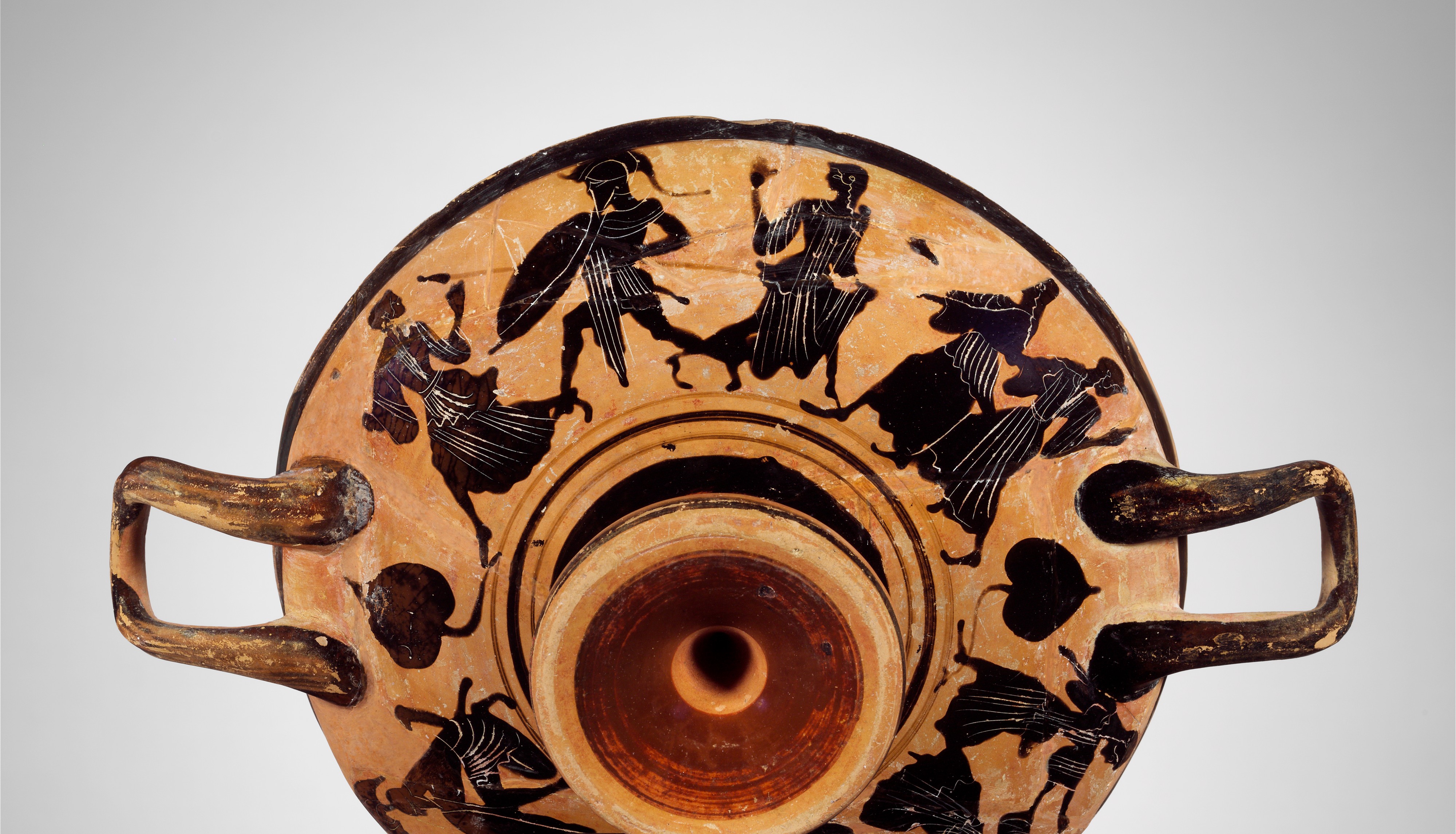Terracotta kylix (drinking cup)
Interior, satyr with wineskin and drinking horn
Exterior, Achilles and Polyxena
A series of black-figure cups of the later first quarter of the fifth century B.C. does not allow easy attribution to Attica or Boeotia. The fabric is poorly fired, the execution exceedingly careless, often with a combination of silhouette and incision. The Attic pieces come from the workshop of the Haimon Painter, a prolific producer of lekythoi (oil flasks) as well as skyphoi (deep drinking cups). Although the fabric of this cup has the pink hue characteristic of Attic clay, the misfiring of the interior and its execution resemble the Boeotian examples.
The interpretation of the well-established subject of Achilles and Troilos on the exterior suggests a painter unfamiliar with the canonical story. According to the latter, the Greek hero Achilles lies in wait for the Trojan prince Troilos near a fountain house where Polyxena, Troilos' sister, fetches water. When Achilles attacks Troilos, Polyxena runs off, dropping her hydria (water jar). This cup shows Polyxena and Achilles on either side of the fountain house; Troilos may be the warrior running up from the other side.
This image cannot be enlarged, viewed at full screen, or downloaded.
This artwork is meant to be viewed from right to left. Scroll left to view more.




